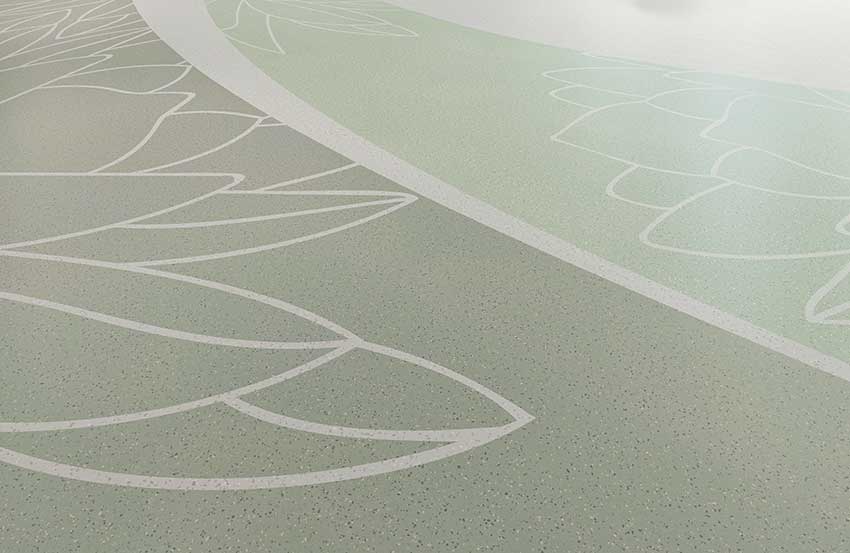Designing Spaces for Behavioral and Mental Health Treatment
Biophilic design fosters positive and sustained interactions and relationships among people and the natural environment. Humans are a profoundly social species whose security and productivity depend on positive interactions within a spatial context. Effective biophilic design fosters connections between people and their environment, enhancing feelings of relationship and a sense of membership in a meaningful community.
According to the respected Terrapin Bright Green consulting group: ‘Biophilic design can reduce stress, enhance creativity and clarity of thought, improve our well-being and expedite healing; as the world population continues to urbanize, these qualities are ever more important. Theorists, research scientists, and design practitioners have been working for decades to define aspects of nature that most impact our satisfaction with the built environment.”12
Conversely, the absence of these principles in the built environment can impact human health. According to a paper in the International Journal of Environmental Research and Public Health, “It is concluded that an environment devoid of Nature may act as a ‘discord,’ i.e., have a negative effect.”13
Terrapin Bright Green offers 14 Patterns of Biophilic Design14 that articulate the relationships between nature, human biology, and the design of the built environment so that building occupants can experience the human benefits of biophilia in design applications.
They are:
Nature in the Space Patterns
- Visual connection with nature
- Non-visual connection with nature
- Non-rhythmic sensory stimuli
- Thermal and airflow variability
- Presence of water
- Dynamic and diffuse light
- Connection with natural systems
Natural Analogues Patterns
- Biomorphic forms and patterns
- Material connections with nature
- Complexity and order
Nature of the Space Patterns
- Prospect
- Refuge
- Mystery
- Risk/peril
Creating Healing Environments
Person-centered design in the healthcare setting has undergone a paradigm shift to incorporate more efficient healing designs. Much evidence in the literature supports the innovations now being used to design the built environment to optimize healing and to foster the healing environment for behavioral and mental healthcare, for the patient, resident, caregiver, staff, and family, specific to the floor.15
Soothing colors—For creating an environment that is calming rather than exciting, soothing, muted colors.
Colors and patterns that reflect local geography—These features could help make the patients feel more at home.
Respite areas—According to the National Institutes of Health, “Healthcare workers are particularly susceptible to burnout.16
Burnout among healthcare workers can adversely affect their performance with a ripple effect across the healthcare system. It increases the risk of medical errors and adversely affects patients’ safety.”17 A therapeutic environment geared toward patients would also benefit the staff and healthcare workers and increase employee retention. Respite areas support the caregiver to alleviate workplace stressors, even for only fifteen minutes. Bringing wood tones with flooring can support the connection to nature.
WHY THE FLOOR MATTERS—FROM THE SUBFLOOR TO THE SURFACE FINISH
Flooring is integral to achieving the safety and aesthetics that best serve the behavioral healthcare facility patients, residents, staff, caregivers, and visitors. The flooring system, from the subfloor to the aesthetic surface finish, sets the stage for all healthcare activities, and its selection and specification can impact multiple health-related outcomes.
Think of the flooring manufacturer as another layer to risk management to mitigate critical impacts, increase safety, maximize efficiency, and capture ROI. The finished floor is only as good as the integrity of the subfloor and the maintenance program established to maintain the flooring. As a solutions expert, the manufacturer is your partner, focusing on flooring as an integrated project team member.
A flooring project has five main phases, each vital to a successful installation meeting customer expectations.
- Product selection/specification
- Pre-installation
- Installation
- Post-Installation
- Maintenance
Flooring and the Eight Goals of Evidence-Based Design
To begin the discussion of the floor, consider the Eight Goals of Evidence-Based Design and how flooring helps achieve them. Based on research from The Center for Health Design, these eight goals inform and support how performance characteristics of flooring materials can have an actionable impact on the health system’s effectiveness and revenue.18

Photo courtesy of Tarkett
The flooring is the foundation for the entire healing atmosphere.









